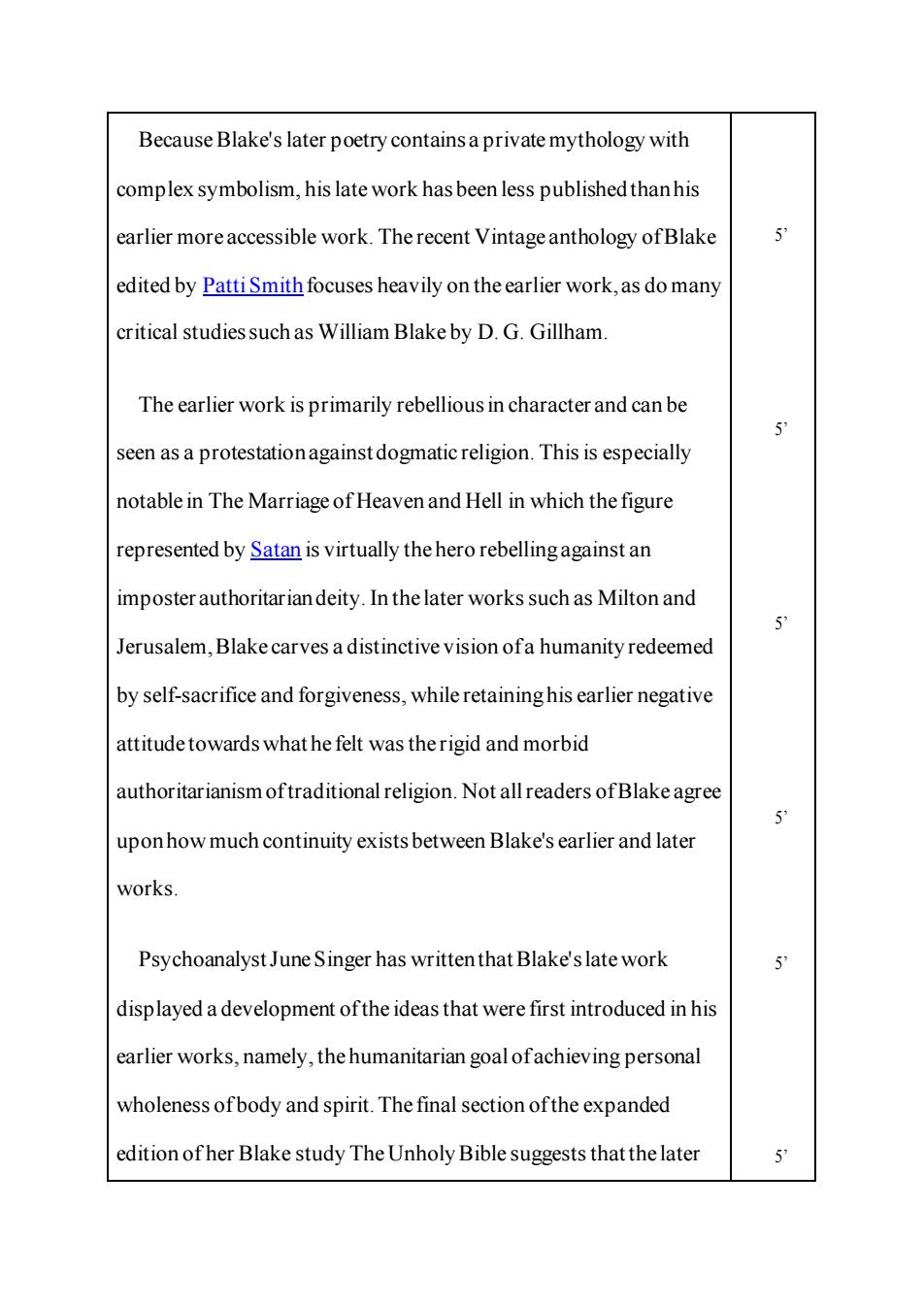正在加载图片...

Because Blake's later poetry containsa private mythology with complex symbolism,his late work has been less published thanhis earlier more accessible work.The recent Vintage anthology of Blake 5 edited by Patti Smith focuses heavily on the earlier work,as do many critical studies such as William Blake by D.G.Gillham. The earlier work is primarily rebellious in character and can be 5 seen as a protestation against dogmatic religion.This is especially notable in The Marriage of Heaven and Hell in which the figure represented by Satan is virtually the hero rebellingagainst an imposter authoritarian deity.In the later works such as Milton and 5 Jerusalem,Blake carves a distinctive vision ofa humanity redeemed by self-sacrifice and forgiveness,while retaininghis earlier negative attitude towards what he felt was the rigid and morbid authoritarianism oftraditional religion.Not all readers ofBlake agree 5 uponhow much continuity exists between Blake's earlier and later works. Psychoanalyst June Singer has writtenthat Blake'slate work 5 displayed a development ofthe ideas that were first introduced in his earlier works,namely,the humanitarian goal ofachieving personal wholeness ofbody and spirit.The final section ofthe expanded edition ofher Blake study The Unholy Bible suggests that the later Because Blake's later poetry contains a private mythology with complex symbolism, his late work has been less published than his earlier more accessible work. The recent Vintage anthology of Blake edited by Patti Smith focuses heavily on the earlier work, as do many critical studies such as William Blake by D. G. Gillham. The earlier work is primarily rebellious in character and can be seen as a protestation against dogmatic religion. This is especially notable in The Marriage of Heaven and Hell in which the figure represented by Satan is virtually the hero rebelling against an imposter authoritarian deity. In the later works such as Milton and Jerusalem, Blake carves a distinctive vision of a humanity redeemed by self-sacrifice and forgiveness, while retaining his earlier negative attitude towards what he felt was the rigid and morbid authoritarianism of traditional religion. Not all readers of Blake agree upon how much continuity exists between Blake's earlier and later works. Psychoanalyst June Singer has written that Blake's late work displayed a development of the ideas that were first introduced in his earlier works, namely, the humanitarian goal of achieving personal wholeness of body and spirit. The final section of the expanded edition of her Blake study The Unholy Bible suggests that the later 5’ 5’ 5’ 5’ 5’ 5’